(报告出品方:东吴证券)
(Reporter: 1.1 从Web1.0到Web3.0,由中心化到去中心化 1.1 From Web1.0 to Web3.0, from centre to centre 万维网(WWW) 诞生,伯纳斯·李看到了超文本在互联网中的潜力,提出 了万维网 (WorldWideWe b-WWW)的概念。蒂姆·伯纳斯·李, 创建了第一个 WWW网站。该网站的诞生标 志着WEB1.0时 代的开启。O‘Reilly Media Web2.0 大会上 Tim O’Reilly 和 Dale Dougherty 再次推广, 这之后Web2.0逐渐被 世人接受。ETH联合创始人, Gavin Wood博士在文 章 “DApps: What Web 3.0 Looks Like” 中首次提及了Web3.0 这个词。 The World Wide Web (WWW) was born, and Bernard Lee saw the potential of hypertext on the Internet and proposed the concept of the World WideWee b-WWWWW. Tim Bernard Lee, created the first WWW web site. The site was launched with the launch of its logo at WeB1.0. O'Reilly Media Web 2.0 at the Congress: O'Reilly and Dale Dougherty, which was gradually accepted by the world. 1.2 Web3.0实现了用户对自身内容创造、身份、收益的掌握 1.2 Web3.0 achieves user ownership of content creation, identity, benefits Web1.0时期,内容由网站提供(PGC),用户只能被动地浏览文本、图片及视频内容,无法参与创作中。 Web2.0时期,出现了博客、视频平台、论坛社区等网站模式,用户可以在平台上自主创作上传内容(UGC),分享并接 受他人观点。 Web3.0时期,人们无需通过中心化平台,便可发布内容完成交易行为,通过NFT等技术获得创作收益(UGA),通过DAO 管理社群。每个人都能掌握自己的(数字)身份、资产和数据。 During Web1.0, where content is provided by the web site (PGC), users are passively able to browse text, pictures, and video content and are unable to participate in creation. During Web 2.0, web-site models such as blogs, video platforms, and forums have emerged in which users can create content on the platform (UGC) and share and receive views from others. Web3.0是基于区块链技术、以用户为主体的网络生态 Web3.0 is based on block chain technology, user-based network ecology Web3.0是基于区块链技术、以用户为主体的网络生态。在Web3.0中,用户为满足自身需求进行交互操作,并在交互中利用区 块链技术,从而实现价值的创造、分配与流通。这样的整个用户交互、价值流通的过程就形成了Web3.0生态。相比Web2.0的 平台中心化特征,Web3.0致力于实现用户所有、用户共建的“去中心化”网络生态。 Web3.0 is based on block chain technology, which is user-driven network ecology. In Web3.0, users interact to meet their needs and use block chain technology interactively to create, distribute and circulate value. This whole user interaction, value flow, forms Web3.0 ecology. Compared to Web 2.0 platform centralization, Web3.0 is committed to the user-owned, user-concentrated network ecology. Web3.0生态组成模块:1)用户身份:用户使用钱包,掌握多个虚拟化身,参与Web3.0网络生态的交互。2)用户交互:通过区块链技术进行用户交互,从而实现价值的创造、分配与流通。3)用户组织:用户形成自治组织,在协作中为Web3.0生态创 造各种应用、工具、协议等。4)底层支撑:区块链从技术层,分布式存储从数据层,共同为Web3.0提供底层支撑。 Web3.0 Ecologic component module 1) User identity: Users use wallets, have multiple virtual incarnations, participate in web 3.0 network eco-interactive interactions. 2) User interaction: User interaction through block chain technology to create, distribute and circulate value. 3) User organizations: Users form autonomous organizations in collaboration to create applications, tools, protocols, etc. for Web3.0 eco-generated applications, tools, protocols, etc. 4) Bottom support: Block chains from the technical layer, distributed storage from the data layer, and together provide bottom support for Web3.0. 2.1 用户通过虚拟化身,参与Web3.0生态交互 2.1 Users participate in the Web3.0 eco-interactive through virtualization 用户通过虚拟化身参与网络世界的交互,Web3.0中,虚拟化身的集合就是用户身份,该身份真正为用户所有、用户掌握,也 被称为——去中心化身份DID(Decentrliazed Identity)。相比起Web2.0时代的用户身份,Web3.0的用户身份在身份控制、开 放性、安全性、隐私性等方面存在着很大区别。Web3.0生态的用户身份是去中心化的,其表现形式和使用方式有如下特征: Users participate in the interaction of the web world through virtual bodies. In Web3.0, the virtual body collection is the user identity, which is truly user-owned, user-owned and also known as -decentralized DD. Compared to the Web 2.0-era user identity, the Web3.0 user identity is very different in terms of identity control, openness, security, privacy. The Web3.0 ecological identity is decentralized, and its forms and uses are as follows: 1)去中心化:DID作为用户身份集合,完全掌控在用户手中,并不由任何一个机构完全掌控。任何一个机构对用户身份的认证,都只是集合之中的一个元素。 1) Decentralization: The DD is fully in the hands of the user and is not entirely in the hands of any institution. 2)表现形式:用户把各机构颁发给自己的身份认证信息,存储在用户完全掌控的区块链地址上,这个区块链地址往往也是用 户的钱包地址。 (2) Expressions: Users issue identification information to agencies and store it on a block chain address fully controlled by the user, which is often also the wallet address of the user. 3)使用方式:通过钱包进行web3.0上各应用的登陆。使用体验与web2.0时代的微信登陆类似。区别在于,DID是用户所有、 用户掌握,而微信会受平台限制。 3) Method of use: Access to web3.0 applications through wallets. The experience is similar to that of web 2.0. The difference is that the DD is owned by the user and is owned by the user, which is restricted by the platform. Web3.0发展初期,用户使用钱包执掌身份 Web3.0 in the early stages of development, users used wallets to identify themselves 目前Web3.0还处于雏形,Web3.0用户普遍通过“钱包”应用来使用和保管DID。除钱包之外,还有许多DID项目致力于构建Web3.0 用户身份系统。钱包主要用于保管数字资产地址,Web3.0中的用户交互都会涉及到数字资产,因此以钱包作为身份的载体,能使 用户更便捷地在web3.0世界中浏览、自主保管私有财产并保护自身隐私。用户使用钱包执掌DID,从而进入Web3.0网络生态,但 目前DID的应用仍存在许多缺陷: Web3.0 is still in its infancy, and Web3.0 users generally use and maintain DDs through the use of wallets. In addition to wallets, there are a number of DD projects dedicated to the construction of web 3.0 user identification systems. Wallet is used mainly to keep digital asset addresses, and user interactions in Web3.0 involve digital assets, so that the use of wallets as a vehicle for identity makes it easier for users to browse, take care of their private property and protect their privacy in the web3.0 world. Users use wallets to take charge of DDs and thus enter Web3.0 network ecology, but there are still many deficiencies in the application of DDs: 1)身份集合尚不完整。DID的设想是成为用户所有现实和虚拟身份的集合,但目前DID仍只是Web3.0生态中的虚拟身份集合,不 包含现实身份。2)互通性不完全。 使用MetaMask、ImToken等钱包能实现DID在大多数dapp上的登陆操作,但没有任何钱包能在 全部的dapp上登录,比如Axie Infinity就只支持自有钱包。3)DID使用户自担风险。DID使用户财产为用户所有、用户保管,实质 上将风险完全归于用户,相比平台保管利弊如何,还不能得出结论。4)用户对DID概念感知不足,只知钱包不知DID。目前 Web3.0中需要多重验证用户身份的应用场景很少,用户直接使用钱包浏览Web3.0即可。当Web3.0应用场景更加丰富之时,将对 DID有更深入的应用。 The use of wallets such as MetaMask, ImToken to enable DD to land on most dapps, but no wallet can be entered on all dapps, such as Axie Infinity, which only supports its own wallet. 3) The DD allows users to take risks on their own. When the Web3.0 application is enriched, the user will be able to apply DD in greater depth than the platform's custody benefits and disadvantages. 4) Users are not aware of the DD concept, but only of the fact that the wallet is not aware of DD. MetaMask——使用人数最多的用户身份载体 Metamask - The most widely used user identity carrier MetaMask是与以太坊区块链进行交互的软件加密货币钱包,是目前使用人数最多的钱包应用。用户通过MetaMask钱包即可 登录大多数Web3.0应用。简单来说,MetaMask是Web3.0生态中DID的载体之一,是目前阶段用户数最多、使用频次最高的 一种DID应用方式。MetaMask具有以下工作特征: MetaMask is an encrypted currency wallet that interacts with the Ether block chain and is currently the most used wallet application. Users can log most Web3.0 applications through the MetaMask wallet. Simply put, MetaMask is one of the DD carriers in the Web3.0 ecology and is one of the most frequently used DD applications at this stage. MetaMask has the following working characteristics: 1)账户管理:MetaMask允许用户以多种方式管理帐户及其密钥,包括硬件钱包,同时将它们与站点环境隔离。 与将用户密 钥存储在单个中央服务器甚至本地存储中相比,这是一个巨大的安全改进。2)区块链连接:MetaMask预装了与以太坊区块 链和多个DeFi平台的快速接口。 这使用户无需同步完整节点即可开始使用,同时MetaMask会持续提供安全性升级和并不断 扩展新的区块链接口。3)安全风险:MetaMask是一个热钱包,这意味着它可以在联网设备上运行。 相比冷钱包可以保持离 线的特点,热钱包会使用户面临更大的安全风险。因此在使用MetaMask时,用户应对授予哪些网站访问权限进行谨慎操作。 1) Account management: MetaMask allows users to manage accounts and their keys in a variety of ways, including hardware wallets, and isolate them from the site environment. This is a significant security improvement compared to storing user keys in a single central server or even in local storage. 2) Block links: MetaMask pre-positions rapid interfaces with the Ether block chain and multiple DeFi platforms. This allows users to start using them without synchronizing complete nodes, while MetaMask continuously provides security upgrades and continuously expands new block links. 3) Security risks: MetaMask is a hot wallet that means that it can operate on network devices. 2.2 用户在交互中,实现价值创造、分配与流通 2.2 Users achieve value creation, distribution and circulation in interactions Web3.0中的所有交互活动都需要依赖特定的应用、工具、技术来实现。在不同设备、不同应用、不同区块链之间数据的流 动与交互,最终构成了Web3.0世界。用户通过这些交互操作,在Web3.0中实现价值创造、分配与流通。 All interactions in Web3.0 depend on specific applications, tools, and technologies. Flows and interactions of data between different devices, applications, and blocks chain eventually form the Web3.0 world. Users use these interactions to create, distribute and circulate values in Web3.0. Web3.0带来了新的价值创造、分配与流通模式,在区块链技术支持下, 用户在交互中的投入,将直接转化为数字资产, 以数字货币或NFT的形式分配给用户,数字资产的流通则通过DeFi实现。而在Web2.0流量时代,用户价值通过平台进行变 现和分配,中心化平台获得大部分价值。具体来说,用户的有效时间、内容创造以及劳动投入等,都会通过区块链技术直 接形成数字资产,交付到用户手上。 Web3.0 brings with it a new pattern of value creation, distribution and circulation, which, supported by block-chain technology, the user's input in interaction will directly translate into digital assets, which will receive most of the value in digital currency or 以GameFi为例,用户游玩,获得游戏代币以及游戏项目NFT等激励,这些代币和NFT可在第三方平台进行交易。在艺术品 领域,用户创造数字作品上传到Web3.0网络,并利用区块链技术对作品签名,从而铸造艺术品NFT,使用户享有作品的收 益权。此外,这对版权保护也有重要作用。在DAO组织中,用户参与DAO治理,贡献自己的劳动,从而获得DAO代币,这 种代币代表着DAO收益的分配权、治理权等。(报告来源:未来智库) In the area of art, users create digital works and acquire incentives such as DeFi——帮助Web3.0价值流通的金融系统 DeFi - Financial system to help Web 3.0 values flow DeFI(去中心化金融)帮助Web3.0中产生的用户价值得以流通,为数字资产提供流动性。DeFi是指基于区块链智能合约的平台和产品,其为用户提供 诸如交易、保险、汇款、借贷、衍生品等金融服务,而无需通过中心化金融平台机构或第三方。从2020年5月到2022年1月的20个月里,DeFi得到了快速 发展。截至2022年4月5日,在所有DeFi协议和平台中质押的资产总数/基础供应量达到2347.3亿美元,2021年12月3日为最高点,约为2556.8亿美元。 用户规模(DeFi Users):截至2021年4月2日,DeFi各项目总计拥有约712万活跃用户,相比自2021年1月的160.78万增长了约3.5倍。 机构情况:截至 2021 年第二季度,大型机构交易(超过 1,000 万美元)占 DeFi 交易的 60% 以上。DeFi 似乎在大型投资者中更受欢迎。 DeFI (decentralization of finance) helps the value of users generated in Web3.0 to move digital assets. DeFi refers to platforms and products based on block-chain smart contracts that provide users with financial services such as transactions, insurance, remittances, lending, derivatives, etc., without the need for centralization of financial platform institutions or third parties. DeFi has developed rapidly in the 20 months from May 2020 to January 2022. As of 5 April 2022, the total number of assets/basic supplies pledged in all DeFi agreements and platforms amounted to $23,473 million, and as of 3 December 2021 it was the highest point at about $25,568 million. The user size (DeFi Users): As of 2 April 2021, the DeFi projects together had about 7.12 million active users, an increase of about 3.5 times since January 2021. 2.3 用户自组织,协作建设Web3.0生态 2.3 Users organize themselves in collaboration to build Web3.0 Ecology Web3.0生态的建设,诸如应用、工具、协议等,都离不开协作,使用户有序协作的组织形式就叫做DAO(Decentralized Autonomous Organization)。DAO全称去中 心化组织,用户因共同的目标而组织形成,利用区块链技术和智能合约程序,进行规则的制定和执行,从而实现能保证公平的社区自我治理形式。 The construction of the Web3.0 ecology, such as applications, tools, protocols, etc., is dependent on collaboration, and the organizational form of structured collaboration between users is called the DAO (Decisionralized Autonomous Organization). 区块链技术是DAO形式得以确立的核心技术基础。组织规则通过区块链智能合约进行编写,由程序保证执行。同时规则存储在区块之上,不可轻易篡改。DAO的建立 过程中,同样会产生价值的创造、分配与流通。DAO在用户交互中建立,并在交互中持续的创造价值。DAO通过发行项目代币和NFT对价值进行分配,使用户享有 DAO的治理权及收益权。DAO代币、NFT也能在DeFi中流通。 Block chain technology is the core technological foundation that DAO forms. The rules of organization are written through block chain smart contracts, which are guaranteed by procedures. The rules are stored on blocks and cannot be easily tampered with. The creation of the DAO also creates, distributes and circulates value. The DAO is created in interaction with users and continues to create value in interaction. The DAO is able to distribute value by issuing project tokens and NFT, allowing users to enjoy DAO governance and revenue rights. 据DeepDao统计,截至2022年4月5日,已有4833个DAO组织,拥有资产达123亿美元,DAO治理模式在Web3.0生态中的渗透率越来越高,许多dapp、区块链项目、 社区等等Web3.0生态应用,都是使用DAO治理模式,其中uniswap、BitDAO便是采取DAO的形式建立的,decentraland也在向DAO的治理模式转变。 According to DeepDao, as of 5 April 2022, there were 4,833 DAO organizations with assets of $12.3 billion, the DAO governance model was becoming more permeable in the Web3.0 ecology, and many dapps, block chain projects, communities, etc., were using the DAO governance model, of which uniswap, BitDAO were created in the form of DAO, and decentraland was also changing to the DAO governance model. 2.4 区块链技术和分布式存储为Web3.0提供底层支撑 2.4 Block chain technology and distribution storage to provide bottom support for Web3.0 区块链技术和分布式存储在不同层面为Web3.0提供底层支撑。区块链是Web3.0的技术底层。最初为点对点账本技术,简单来说就是用户共同 维护的公共账本。而以太坊在区块链上添加了智能合约,使得在区块链上的编程、应用开发成为可能。由此各种去中心化应用诞生,构成 Web3.0生态。分布式存储构建了Web3.0的数据存储层。在Web3.0生态中,用户身份、用户交互、用户资产、用户组织等产生的数据都需要 以去中心化的方式进行存储。从而使数据不需托管在第三方中心化平台,数据价值将真正为用户所有、用户掌握。 Block chain technology and distribution storage provide bottom support for Web3.0 at different levels. The block chain is the bottom of the Web 3.0 technology. The initial point reconciliation technology is simply a common public account book maintained by the user. Instead, a smart contract has been added to the block chain by the Taihouse, making it possible to program and apply to the block chain. As a result, various decentralised applications are born, making up the Web3.0 ecologic system. The distributed storage has constructed the Web3.0 data storage layer. In the Web3.0 ecology, data generated by user identity, user interaction, user assets, user organization, etc. need to be stored in a decentralized manner. IPFS是分布式存储的实现方式之一,IPFS作为分布式文件系统,用于存储和访问文件、网站、应用程序和数据。IPFS具有去中心化、价值激励、 用户共建等特征,是典型的Web3.0生态的应用与协议。具体而言:1)去中心化:数据分布存储在不同节点,使用区块链技术对数据加密和认 证。2)用户共建:用户以其所具有的存储资源参与IPFS存储网络的建设。3)价值激励:用户进行数据存储和读取需要像存储网络付出相应价 值,用户对数据的存储和加密将获得价值激励。 IPFS is one of the ways to achieve distributed storage, which is used as a distributed file system to store and access files, websites, applications, and data. IPFS is characterized by decentralisation, value incentives, and co-construction by users. It is typical of Web3.0 eco-applications and protocols. Specifically: 1) Decentralization: data distribution is stored at different nodes, encryption and authentication of data using block chain technology. 2) Users build together: users participate in the construction of the IPFS storage network with their stored resources. 3) Value incentives: users pay the appropriate value for data storage and reading the image storage network, and users will gain value incentives for data storage and encryption. 3.1 政策引导、鼓励行业健康发展 3.1 Policy direction and encouragement of industrial health 2021年,政府出台相应政策大力支持元宇宙发展。十四五规划多次提到要大力发展区块链技术,同时要加大对沉浸式视频、虚拟现实、8K高清视 频等元宇宙相关技术的发展建设。国务院、各地政府竞相出台政策文件,大力推进本地元宇宙相关产业建设。与此同时,政府对虚拟货币实施严 格监管。2017年央行便发布公告,指出虚拟货币不具有法币功能,需注意相关风险。 In 2021, the government introduced policies that strongly supported the development of the meta-cosm. The 14th Five-Year Plan made several references to the development of block-chain technology, along with the development of meta-cosm-related technologies such as immersion video, virtual reality, and 8K high-visibility frequency. 2021年9月国家发改委等11部门发布通知,严禁新增虚拟货币 “挖矿”项目,同时加快存量项目有序退出,全面禁止了“挖矿”行为。区块链技术应用逐步在金融、物流、数字版权、保险等领域落地。在金融领域, 使金融交易成本下降的同时提高快速完成交易支付。在物流领域,可降低物流成本,追溯物品的生产和运送过程。在数字版权领域,可以对作品 进行鉴权,保证权属的真实、唯一性。在保险领域,通过智能合约应用,实现保单自动触发。 In September 2021, 11 departments, such as the National Development and Reform Commission, issued circulars prohibiting the introduction of new virtual currency “mining” projects, while accelerating the orderly withdrawal of stock projects and the total prohibition of “mining” activities. The application of block-chain technology has gradually been introduced in areas such as finance, logistics, digital copyright, and insurance. In the financial sector, financial transaction costs have been reduced while faster transaction payments have been made. In the area of logistics, logistics costs can be reduced and the production and delivery of goods traced. In the area of digital copyright, work can be tested to ensure the trueness and exclusiveness of tenure. 3.2 web3未来的投资机会:或与当前互联网生态互为补充 3.2 Web3 Future Investment Opportunities: or Complementing the current Internet Ecology 在当前的互联网生态中,互联网企业都是作为平台的主导方,制定规则并进行管理,在价值分配环节,平台具有绝对优势,从而主导价值分配, 头部的互联网企业甚至带来一定的垄断风险。 平台通常是公司所有、以利润为目标,因此价值分配将倾向于保证平台的收益。而在web3生态 中,这种情况发生了改变。 Web3在生态的每一个要素中,都体现出了去中心化的特点。我们认为,在后续的发展过程中,Web2.0时代的中 心化应用、平台模式将与Web3.0时代的去中心化应用、分布模式长期共存。无论是用户身份、价值系统、用户组织,都会在Web2.0和 Web3.0中产生重叠。在这种重叠中,庞大的数据将如何存储、日趋紧张的算力将如何分配、流量竞争将如何发展等新课题,将为生态参与方 带来挑战和机遇。 In the current Internet ecology, Internet enterprises are the dominant players in the platform, setting rules and managing it. In the value distribution chain, the platform has an absolute advantage, leading to a distribution of values, and leading to even a degree of monopoly risk. (本文仅供参考,不代表我们的任何投资建议。如需使用相关信息,请参阅报告原文。) (This document is for information purposes only and does not represent any of our investment proposals. For relevant information, please refer to the original version of the report. 详见报告原文。 See the original version of the report for details. & nbsp; & nbsp; & nbsp; & nbsp; & nbsp; 精选报告来源:【未来智库】。 Selected sources: 1、Web3.0:基于区块链技术、用户主导、去中心化的网络生态
2、Web3.0生态主要要素及特点
3、国内视角看Web3.0投资分析
报告节选:
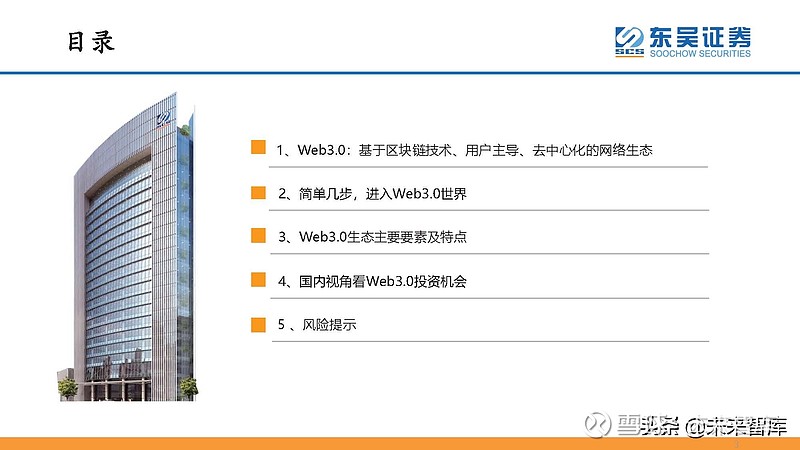
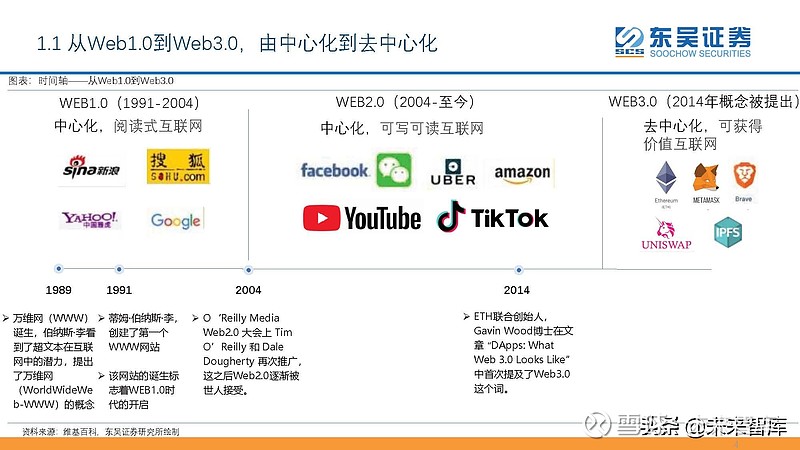
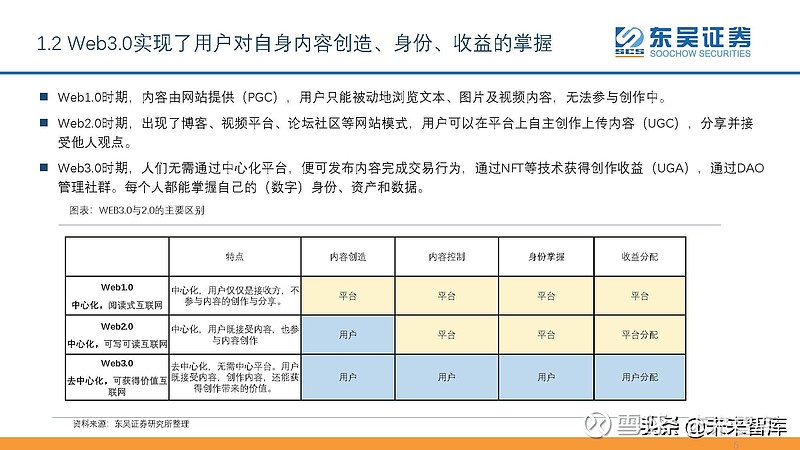
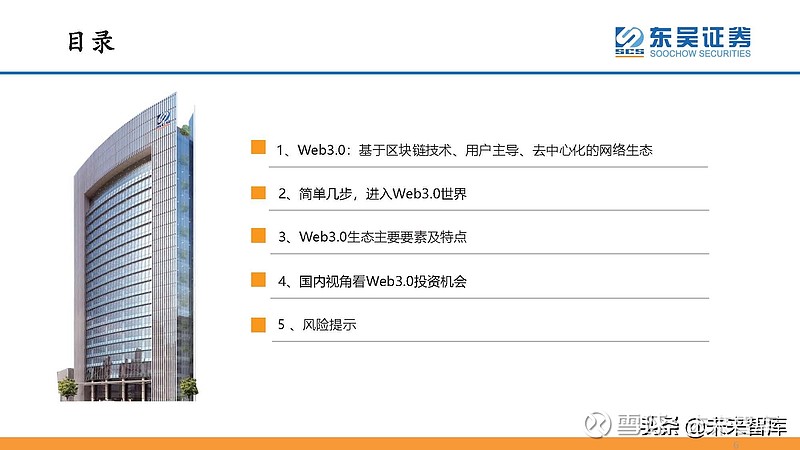
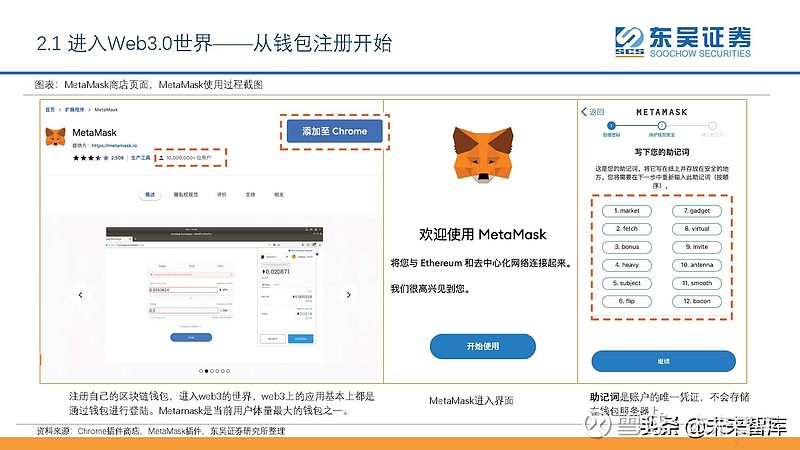
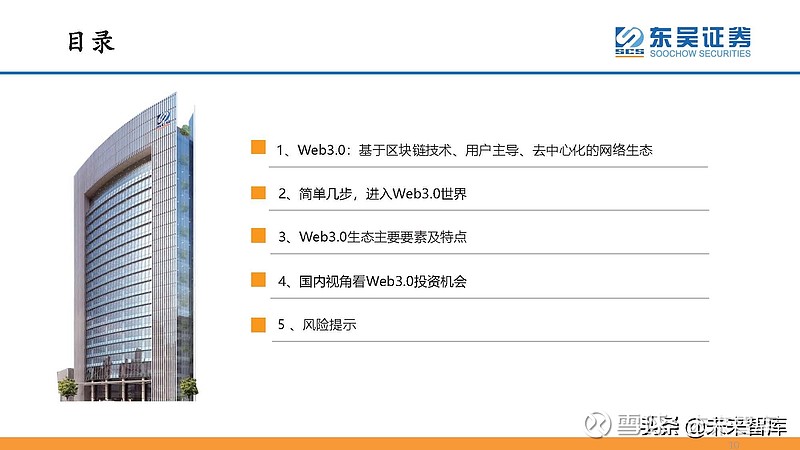
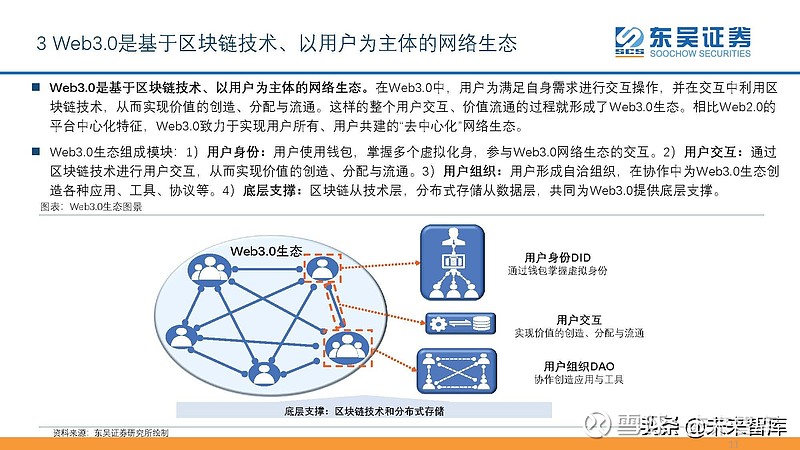
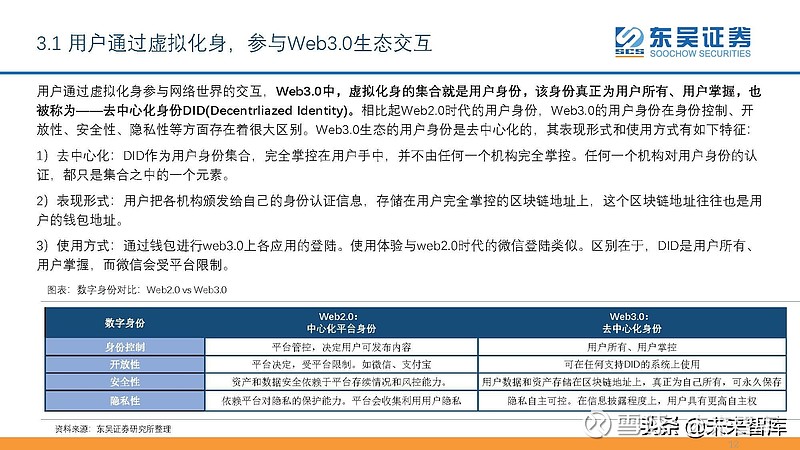
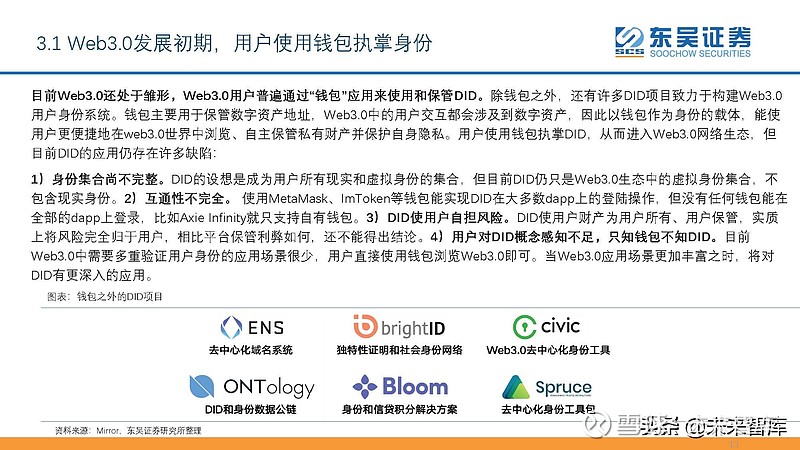
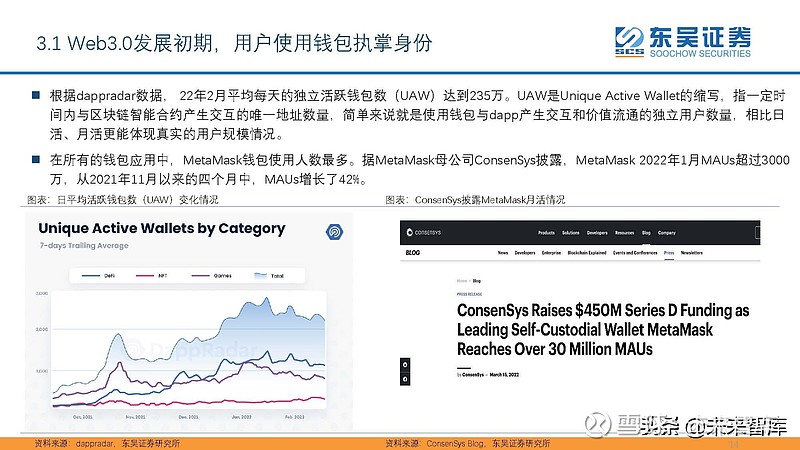
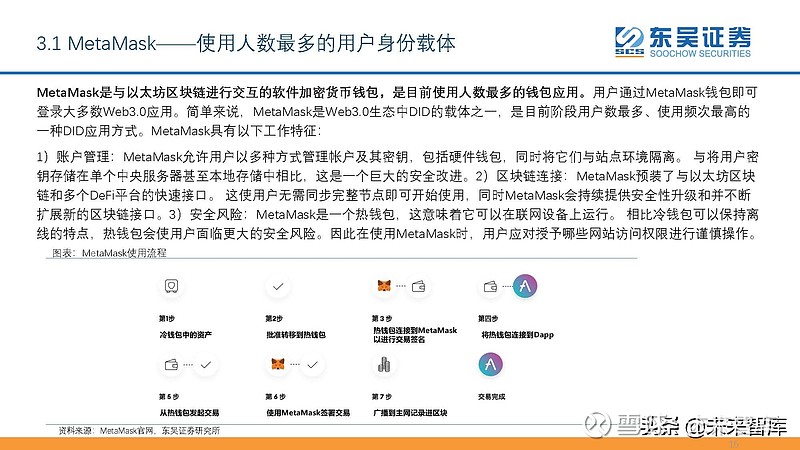
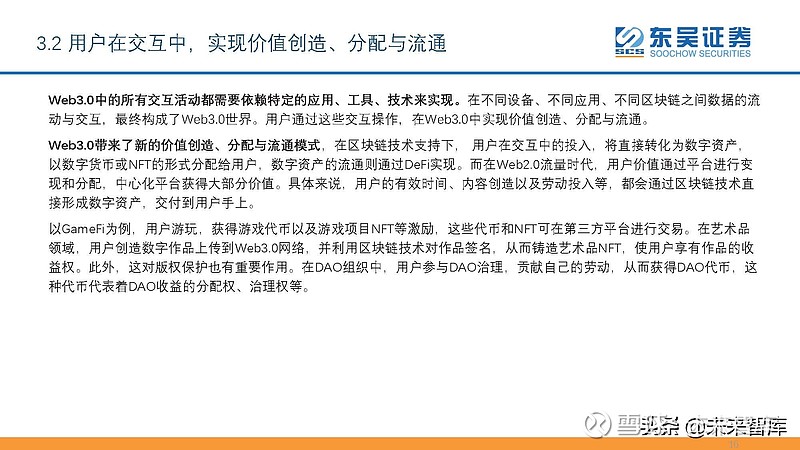

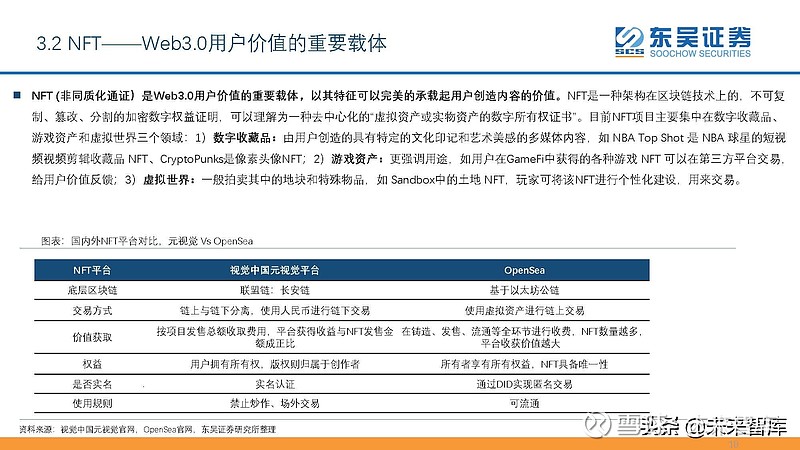
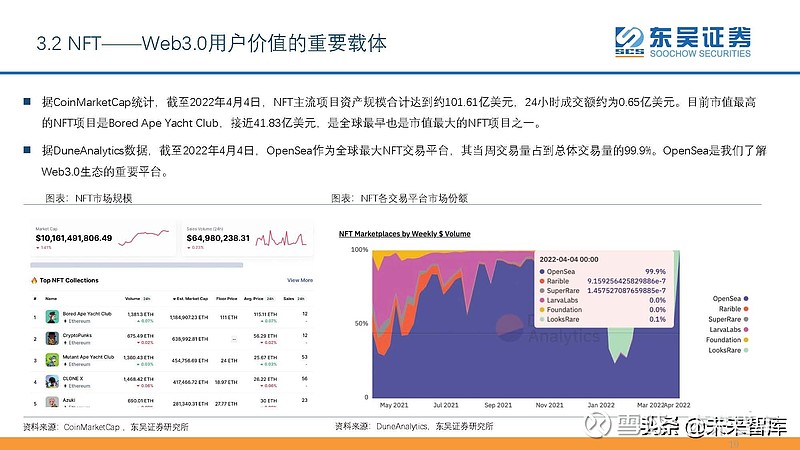
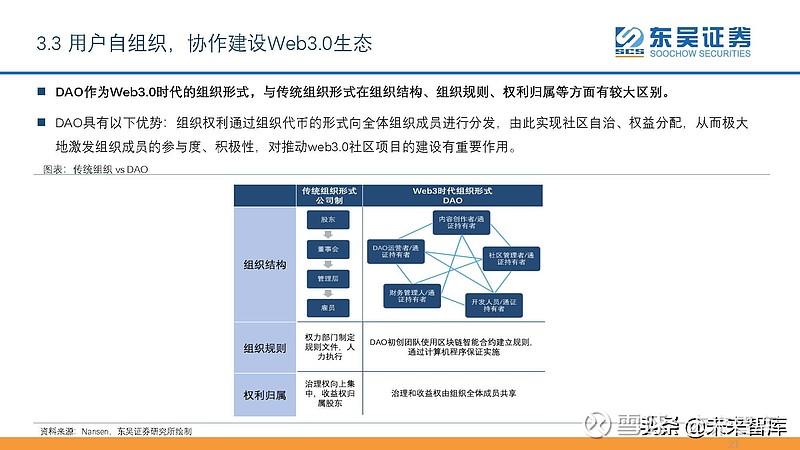
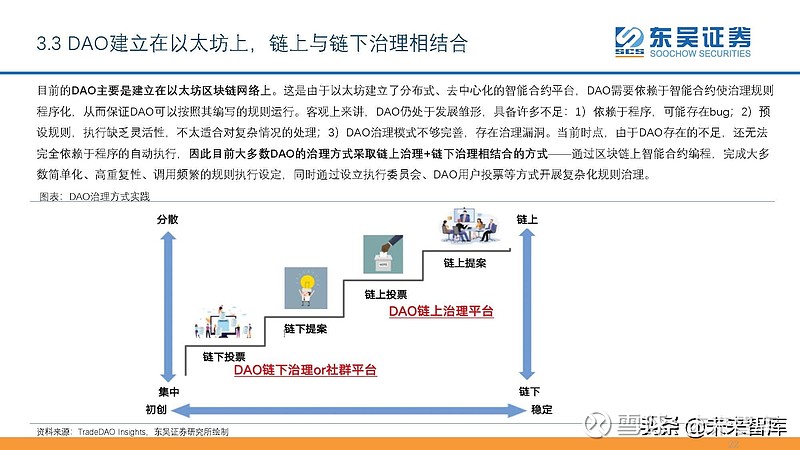
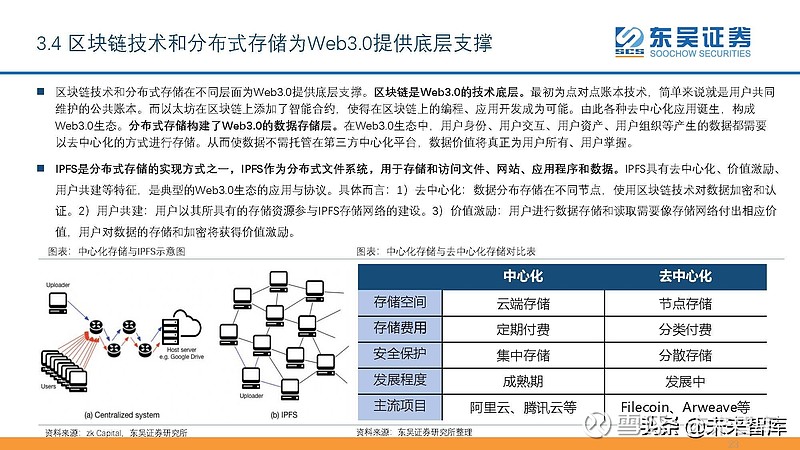
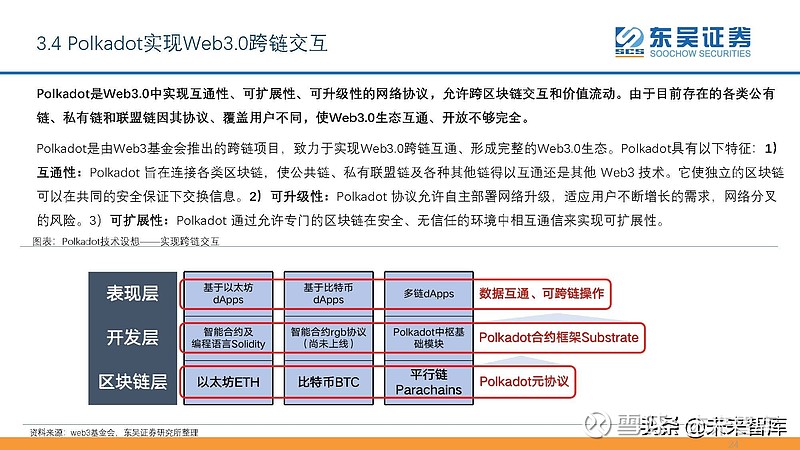
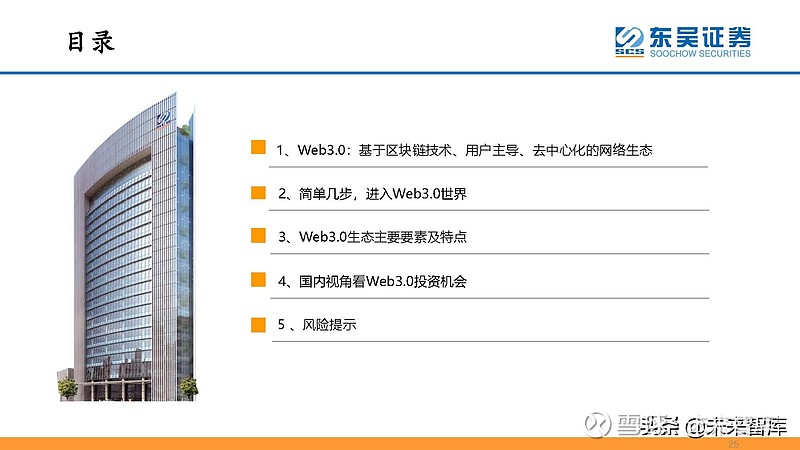
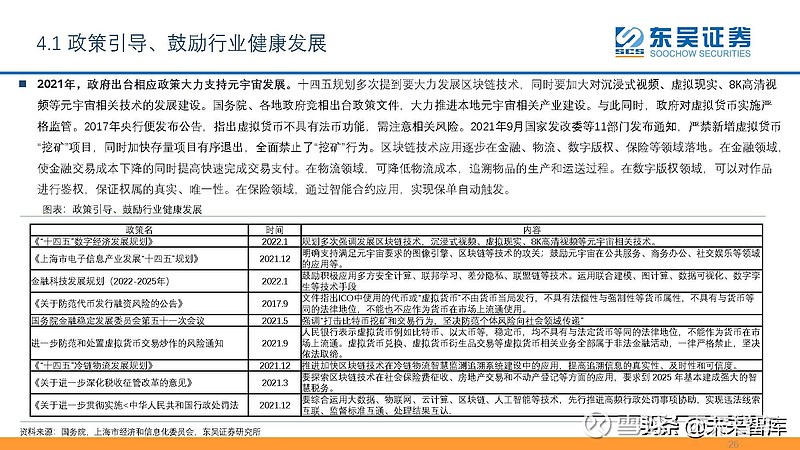
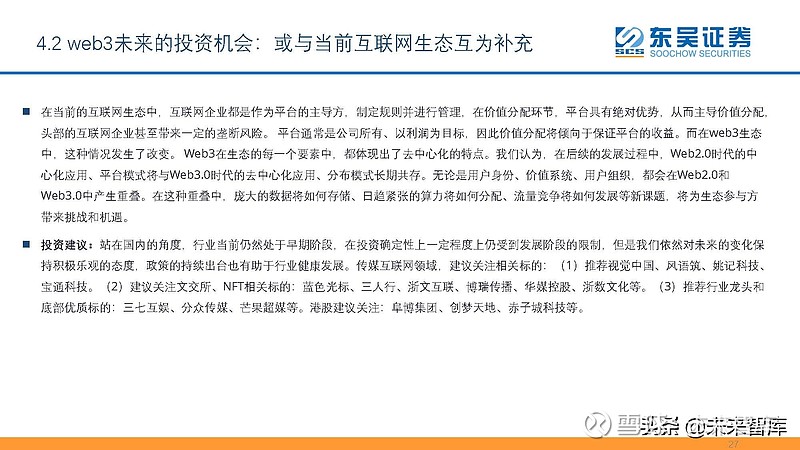
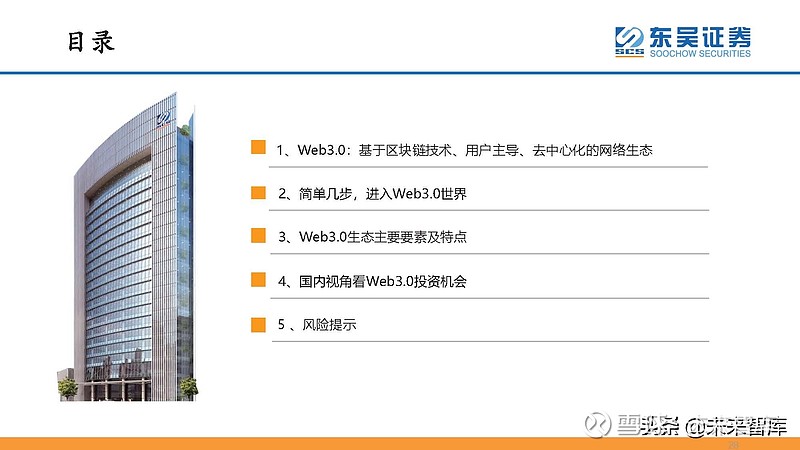
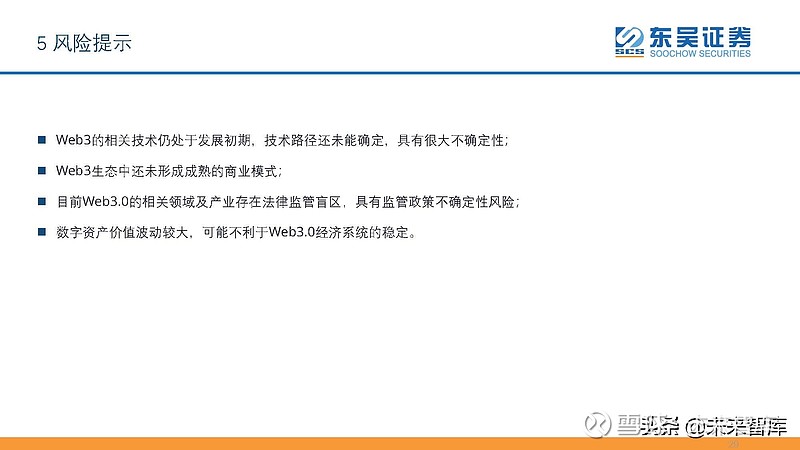
注册有任何问题请添加 微信:MVIP619 拉你进入群

打开微信扫一扫
添加客服
进入交流群










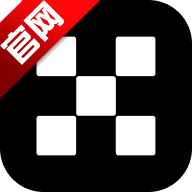







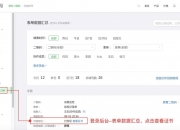
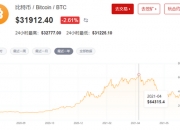

发表评论